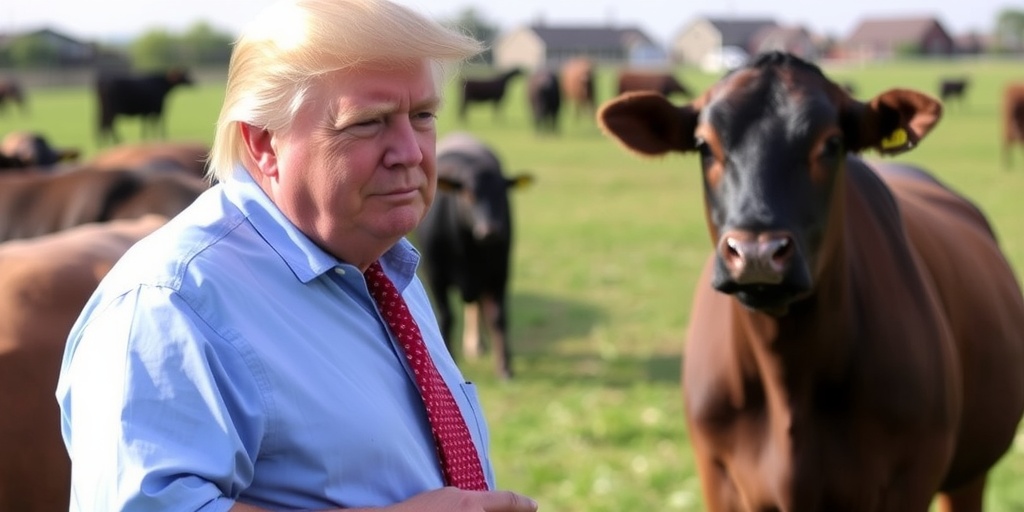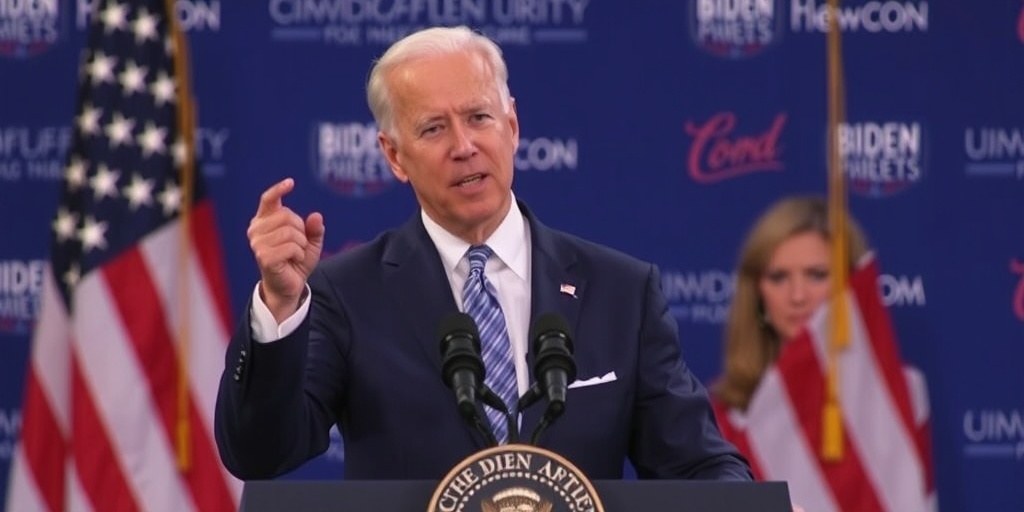Now Reading: White House Considers Costly Farmer Bailouts Amid Looming Trump Tariffs
-
01
White House Considers Costly Farmer Bailouts Amid Looming Trump Tariffs
White House Considers Costly Farmer Bailouts Amid Looming Trump Tariffs

Trump Administration Considers Emergency Aid for Farmers Amid Tariff Threats
As President Trump prepares to implement expansive tariffs worldwide, his administration is discussing the possibility of a new round of emergency financial assistance for farmers. These agricultural producers may face significant challenges if other countries retaliate against the tariffs, mirroring the difficulties experienced during Trump’s previous trade confrontations, particularly with China.
Recent conversations among administration officials indicate a recognition that the proposed tariffs could have devastating effects on the U.S. agricultural sector, a vital constituency for the president. In 2018, as part of his trade war with China, Trump attempted to protect farmers with an aid package when their export sales to China were severely affected. The administration is currently contemplating a similar strategy, though no specific aid details have been publicly outlined yet.
The prospects of a new financial aid initiative come with the understanding that the financial repercussions could be substantial. In response to China’s retaliatory tariffs beginning in 2018, the U.S. government provided approximately $23 billion to support farmers facing losses in soybean, corn, and wheat exports. This funding was drawn from the U.S. Department of Agriculture (USDA), particularly from its emergency funds.
During a press briefing last week, Agriculture Secretary Brooke Rollins confirmed the administration’s intention to potentially implement emergency aid for farmers. She shared that Trump has instructed her to prepare strategies to mitigate possible economic fallout that could arise from a trade stalemate.
However, this time around, the financial burden of such a bailout could be even more significant. Trump’s intention to target a wide array of countries—including allies such as Canada, Mexico, and those in Europe—means that retaliation could be broader, risking more extensive harm to American businesses.
Trade expert Joseph Glauber, a research fellow at the International Food Policy Research Institute and former USDA chief economist, warns that if expansive tariffs are enacted, farmers might demand substantial assistance to offset possible losses.
Initial discussions regarding a farmer bailout have reportedly taken place between administration officials, agricultural lobbying groups, and Republican congressional representatives. Although they are still in the nascent stages of planning, potential mechanisms for the distribution of funds have been discussed. Some strategies may indeed require legislative approval from Congress to be enacted.
Compounding the complexity of implementing a bailout is its potential financial impact on Trump’s overall tariff strategy. The president has expressed a desire for tariffs to generate significant revenue, which would support his ongoing efforts to expand and prolong sets of tax cuts that may cost trillions.
The implications extend beyond just aid for farmers; as these tariffs could lead to higher prices for consumers, the taxpayers may ultimately bear the brunt of the financial response. Alex Durante, a senior economist at the Tax Foundation, highlighted that both consumers and taxpayers would be adversely affected if the tariffs lead to increased costs.
While the White House has remained tight-lipped about the specifics of any potential aid discussions, an official speaking anonymously indicated that deliberations are preliminary and closely linked to ongoing negotiations surrounding the tariffs and trade relations with other countries.
Under Trump’s current plan, punitive tariffs would take effect soon and are expected to be robust. His objective includes generating revenue and reshaping the nation’s trade dynamics, encouraging businesses to increase their domestic manufacturing.
However, economic analysts caution that consumers, especially, might face immediate repercussions as companies adjust prices to compensate for the elevated import costs induced by the tariffs.
For farmers, the situation may be particularly precarious. China has already enacted 20% tariffs on several American agricultural products since Trump took office, leading to their own retaliatory measures against American imports, including chicken, wheat, corn, and cotton. Furthermore, the European Union has formulated a list of potential American products to target in retaliation for any new tariffs.
Domestically, farmers are increasingly anxious that tariffs could depress commodity prices, thereby making their products less attractive on international markets if their foreign counterparts respond with their own restrictions. Kenneth Hartman Jr., president of the National Corn Growers Association and an Illinois farmer, shared his apprehension about the negative economic effects the tariffs could inflict on his industry.
Hartman articulated a hope that as the tariffs take effect, the industry could adapt by exploring new markets, though the looming threat of a protracted trade conflict raises concerns about permanent loss of market share to international competitors.
Economic fears are palpable among farmers, with some even expressing their preference for fair trade over government relief. While the Trump administration considers various funding mechanisms, the U.S. Department of Agriculture may encounter funding constraints that could hinder its ability to provide effective assistance. Should significant international backlash occur, Congress might need to step in to augment the USDA’s borrowing capabilities, igniting complex political dialogues on Capitol Hill about the allocation of agricultural funds.
In conclusion, as President Trump moves forward with his tariff strategy, the challenge of balancing the well-being of farmers with the administration’s broader economic goals remains vital. The future of U.S. agriculture hangs precariously in the balance, shaped by both domestic policies and international responses.
Stay Informed With the Latest & Most Important News
Previous Post
Next Post
-
 01New technology breakthrough has everyone talking right now
01New technology breakthrough has everyone talking right now -
 02Unbelievable life hack everyone needs to try today
02Unbelievable life hack everyone needs to try today -
 03Fascinating discovery found buried deep beneath the ocean
03Fascinating discovery found buried deep beneath the ocean -
 04Man invents genius device that solves everyday problems
04Man invents genius device that solves everyday problems -
 05Shocking discovery that changes what we know forever
05Shocking discovery that changes what we know forever -
 06Internet goes wild over celebrity’s unexpected fashion choice
06Internet goes wild over celebrity’s unexpected fashion choice -
 07Rare animal sighting stuns scientists and wildlife lovers
07Rare animal sighting stuns scientists and wildlife lovers





















